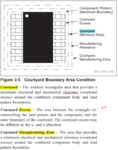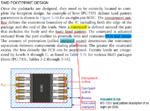mmitchell
Advanced Member level 4
Hi,
In IPC-7351 there is the concept of courtyard, courtyard excess, and courtyard manufacturing zone. I don’t understand what “courtyard manufacturing zone” is:

Matt
In IPC-7351 there is the concept of courtyard, courtyard excess, and courtyard manufacturing zone. I don’t understand what “courtyard manufacturing zone” is:
- “Courtyard excess” already defined the amount of protrusion.
- But why in Fig. 3-5 “courtyard manufacturing zone” seems to add another round of protrusion outside “courtyard excess”?

Matt
Last edited by a moderator:
